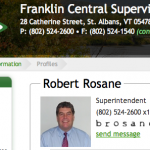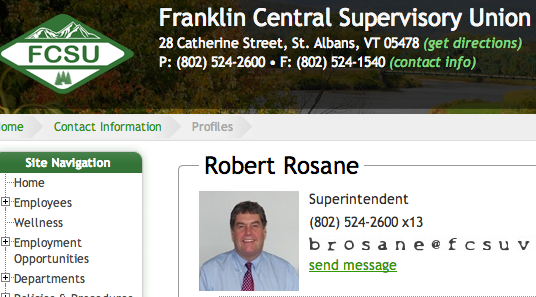Opinion, by Frederick M. Hess
Wall Street Journal
December 18, 2012
McGraw-Hill recently announced plans to sell its education publishing division to Apollo Global Management for $2.5 billion. The deal is a reminder that K-12 schooling is a $600 billion-a-year business. In 2008, schools and systems spent $22 billion on transportation, $20 billion on food services and even $1 billion on pencils.
These transactions typically elicit only yawns. Yet angry cries of “privatization” greet the relatively modest number of reform-minded, for-profit providers that offer tutoring or charter-school options to kids trapped in lousy schools. Gallup surveys show that more than 75% of Americans are comfortable with for-profit provision of transportation and facilities. Barely a third are fine with for-profits running schools.
This bias shows up in federal legislation that bans for-profit ventures from competing in the U.S. Department of Education’s Investing in Innovation Fund. When New York legislators lifted the state’s charter-school cap in 2010, they placated unions by banning for-profit charters. Most recently, the reform-minded group Parent Revolution has pushed for legislation prohibiting parents who have invoked the “parent trigger”—through which they can vote to reconstitute a failing school—from joining with for-profit charter-school operators.
This state of affairs is highly unusual, notes John Bailey, executive director of Digital Learning Now. In areas like health care, clean energy and space exploration, “policymakers do not ask whether they should engage for-profit companies, but how they should.” NASA set aside $6 billion to support the private development of spacecraft. SpaceX built its “Dragon” capsule, capable of transporting humans and cargo into space, for $800 million—less than 10% of the $10 billion NASA had spent trying to build a model.
Critics charge that for-profits are distracted by the demands of investors, while public systems can focus solely on the children. Yet the vast majority of K-12 spending goes to pay employee benefits and salaries. Meanwhile, school boards and superintendents have accepted crippling benefit obligations and dubious policies to placate employees and community interests. In a 2010 national survey by the American Association of School Administrators, 84% of superintendents said that their districts were cash-strapped—but less than one in three said they had considered trimming employee benefits or outsourcing custodial services or maintenance.
The watchful eye of investors can lend for-profits a healthy discipline. The prospect of returns means that promising profit-seeking ventures can offer employees lucrative long-term opportunities and can tap vast sums through the private-equity markets. For-profits have a relentless, selfish imperative to seek out and adopt cost efficiencies.
Nonprofits, by contrast, have little incentive to become “early adopters” of cost-saving tools and techniques such as online instruction. Such shifts upset relationships with vendors and routines for staff. Even enormously successful nonprofits such as Teach for America and the KIPP charter-school network tend to grow far more slowly and show much less interest in squeezing their cost structures than comparable for-profit ventures.
Between 1996 and 2011, the number of for-profit charter schools nationwide increased to 758 (with nearly 400,000 students) from six (with 1,000 students). That’s still less than 1% of the 50 million students enrolled in K-12 schools. In higher education, by comparison, for-profit providers enrolled 2.4 million students in 2010, or more than 10% of total postsecondary enrollment.
The record of private ventures in education, to be sure, is mixed. The incentive to cut costs can translate into a willingness to cut corners. The urge to grow can lead to deceptive marketing. These are legitimate concerns that demand transparency and sensible regulation.
As it happens, McGraw-Hill’s $2.5 billion deal with a deep-pocketed, closely held investor was greeted with cool detachment. That ought to be the norm for the full range of much smaller for-profit ventures in the evolving world of schooling.
What once required a textbook can now be delivered faster, more cheaply and more effectively using new tools and technology. As schools, systems and suppliers respond accordingly, students will be well-served if educators, parents and policy makers recognize that public systems, nonprofits and for-profits all have vital roles to play when it comes to providing great schooling for 50 million children.
Mr. Hess, director of education policy studies at the American Enterprise Institute, is the author of “Cage-Busting Leadership,” out early next year by Harvard Education Press.














For-Profit Bias Playing Out In Brockton
A commentary in the Wall Street Journal today, “The Irrational Fear of For-Profits in Education” , could not have come at a better time, as the hearing on the Brockton charter school, run by for-profit provider SABIS, is today in Massachusetts.
The Wall Street Journal piece notes that Americans are fine with privatization in many other areas, like transportation, yet there is an odd bias against for-profits running schools. “Critics charge that for-profits are distracted by the demands of investors, while public systems can focus solely on the children. Yet the vast majority of K-12 spending goes to pay employee benefits and salaries. Meanwhile, school boards and superintendents have accepted crippling benefit obligations and dubious policies to placate employees and community interests.”
The local Massachusetts superintendent, who has been selected as the next state superintendent, falls victim to this bias and has vocally opposed the charter (and was even caught trashing charters on company time). What’s crazy is that SABIS already successfully runs schools elsewhere in The Bay State and is helping “close the achievement gap between its mostly minority student body and white counterparts in the suburbs“.
As the Boston Globe notes, “SABIS has earned the right to expand in Massachusetts” — they should at least be given a fair shot and not be short-changed based on the fact that they operate to make a little change — which according to the academic record here, isn’t just monetary.